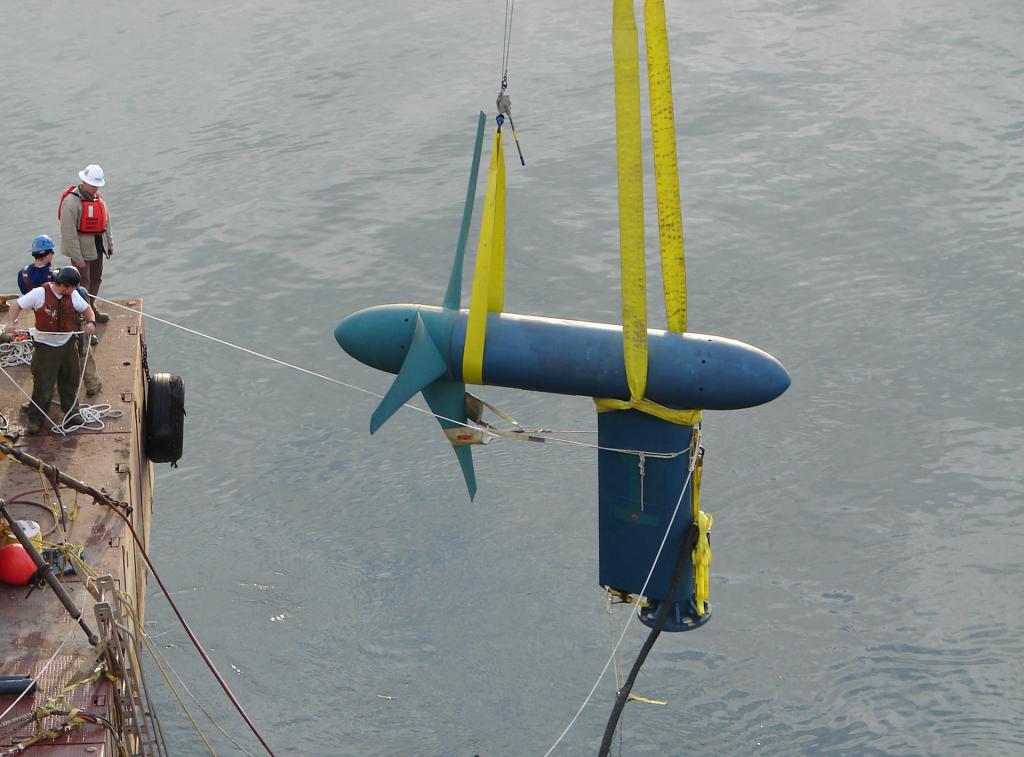Project Details

Overview/Objective
Marine energy, the energy harnessed from the motion of waves and currents, relies on emerging technologies that have the potential to expand the nation’s energy sector. To develop innovations that can be successfully brought to market and to the power grid, the US Department of Energy’s (DOE’s) Water Power Technologies Office has implemented TEAMER, or the Testing Expertise and Access for Marine Energy Research program.
The multi-year, $25 million program, directed by the Pacific Ocean Energy Trust, offers open funding calls for marine energy developers seeking to test their technologies. TEAMER’s goal is to provide applicants access to world-class user facilities, technical expertise, and testing capabilities offered across a national network of universities and national laboratories.
Impact
As the Department of Energy’s largest science and energy laboratory, Oak Ridge National Laboratory (ORNL) boasts a network of user test facilities, whose extensive capabilities help drive and validate new technologies and innovations.
ORNL Capabilities and Expertise
- Manufacturing Demonstration Facility
The Manufacturing Demonstration Facility (MDF) can help reduce manufacturing costs and increase the durability of materials, thus reducing the levelized cost of energy, a significant obstacle to bringing marine energy technologies to market. The MDF has collaborated with several energy companies, using 3D printed molds and additive manufacturing to create turbine components and proposing materials that are resistant to corrosion and biofouling.
- Oak Ridge Leadership Computing Facility
Home to the world’s first exascale supercomputer, Frontier, the Oak Ridge Leadership Computing Facility (OLCF) can address and employ a range of numerical simulations applicable to marine energy problems, using either off-the-shelf computational fluid dynamics software or developing custom scalable codes. Relevant simulations include turbine hydrodynamics and design optimization, fluid-structure interaction modeling, smooth particle hydrodynamics, environmental modeling, and mooring dynamics simulation.
- Aquatic Ecology Laboratory
Recent studies conducted at the Aquatic Ecology Laboratory (AEL) have focused on turbine blade fish strikes, magnetic field interactions, and environmental sound characterization. The AEL is now leading studies on the toxicity of biofouling agents and a new generation of ionic liquids used as environmentally acceptable lubricants. The AEL can also develop individual-based models to estimate population-level consequences and risk to marine species posed by marine energy technologies.
- Grid Research Integration and Deployment Center
Marine energy scientists can conduct micro-grid simulations at the Grid Research Integration and Deployment Center (GRID-C) on marine energy applications in isolated and underserved communities, simulate and test electronic interconnections, secure engineering support on control systems, and test advanced sensors for health and environmental monitoring.
- National Transportation Research Center
Capabilities provided by the National Transportation Research Center (NTRC) can be leveraged to test turbines, powertrain systems, power electronics, and batteries for energy storage. Other equipment and capabilities include dynamometers, hardware-in-the-loop systems, generator testing, power performance modeling, and power take-off testing.
Next Steps
To collaborate with ORNL, contact Jiyong Lee to learn more about ORNL user facilities and testing capabilities. Then apply on the TEAMER website.


